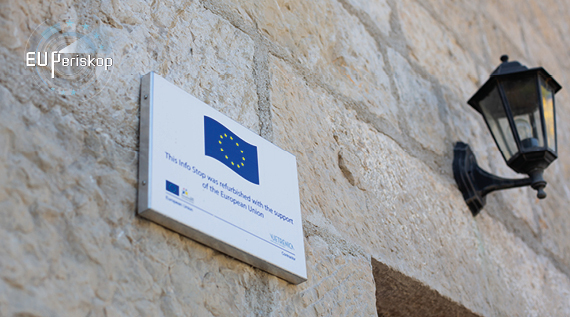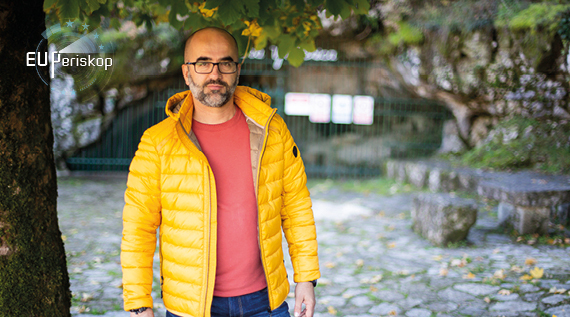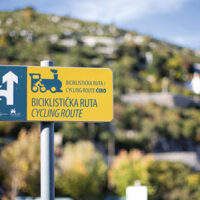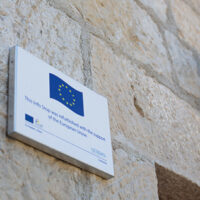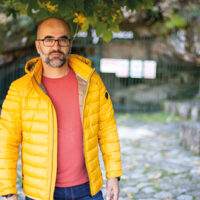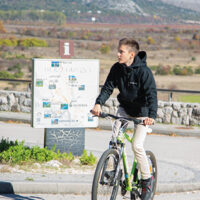
Strengthening the tourist offer and connecting the regions by revitalizing the Ćiro trail
The narrow-gauge railway in Herzegovina and the Dubrovnik regions was built at the beginning of the 20th century and connected Mostar with Dubrovnik and Konavle in Croatia. The first ‘Ćiro’ [&hel...
The narrow-gauge railway in Herzegovina and the Dubrovnik regions was built at the beginning of the 20th century and connected Mostar with Dubrovnik and Konavle in Croatia. The first ‘Ćiro’ passed through this line on July 15, 1901, and for more than a century the idea of revitalizing this line as a bicycle path was born on both sides of the border in order to preserve the line as a cultural and historical heritage and develop a new tourist offer.
“The European Union has supported the project ‘Ćiro – World Heritage Trail’ and in this way we have gained certain comparative advantages during this pandemic, which will certainly help in the development of tourism in this part of Herzegovina even after this health crisis. It is important for the municipality of Stolac as a project partner that we will help not only the local community, in terms of building infrastructure, but also that we will help the private sector, ie. encourage them to continue working and networking agriculture, tourism and cultural tourism,” said Maja Lopin, Director of JU Radimlja from Stolac.
Tourist offers along the old railway line connecting the municipalities of Stolac, Ravno, Čapljina and Mostar will be promoted in a unique way, and the use of new information tools and modern media will improve the quality and visibility of the bike path along the UNESCO protected area in Bosnia and Herzegovina and thus opening up new business opportunities for local producers and service providers.
This bike path connects two different cross-border areas and as such will be recognized as a unique tourist offer with a clear identity. The trail will connect a number of tourist attractions from Bosnia and Herzegovina and the Republic of Croatia, including the UNESCO-protected Old Bridge in Mostar, the Old Town of Počitelj, the Orthodox Church in Žitomislić, the Hutovo Blato Nature Park, the Roman ruins of Mogorjelo, and the Vjetrenica Cave. UNESCO list, the Orthodox monastery of Zavala, the karst Popovo field, the Old Town of Dubrovnik which is under UNESCO protection, the karst Konavle field and numerous wineries, bridges, tunnels, rivers and fields of this area.
“The result of this project is something that we really need, and that is the promotion of all facilities that are located next to or on the track, which was one of our main goals. It is also important for us to make one identification card, the so-called ‘Heritage Pass’, which all tourists who want to visit all locations will be able to use as a single ticket, “ says Nikša Vuletić from JU Vjetrenica, Ravno.
Recognizing and investing in the tourist potential of Herzegovina, a region rich in cultural, historical and religious heritage, certainly leads to raising awareness of the rich natural resources to strengthen the economy and local communities. New opportunities for promotion, new jobs, visitors and tourists who will be uniquely presented with the rich offer of this area will have the opportunity to enjoy the beauties of Herzegovina, walk the historic Ćiro trail and enjoy historical attractions along the trail such as the Eiffel Bridge, Mustajbeg Bridge, a necropolis near Hutovo Blato and many others.
The European Union has recognized the potential of this project and supports it through the Cross-Border Cooperation Program in which PE ‘Vjetrenica-Popovo polje” participates as a leading partner and organization REDAH, Čapljina, Ravno and Neum, Tourist Organization of Trebinje and Association ‘Herzegovina Bike’ from Bosnia and Herzegovina. Successful cooperation between the public and private sectors and civil society organizations participating in the implementation of the project are another indicator of the need for joint action to improve and strengthen the economic potential of Bosnia and Herzegovina.

